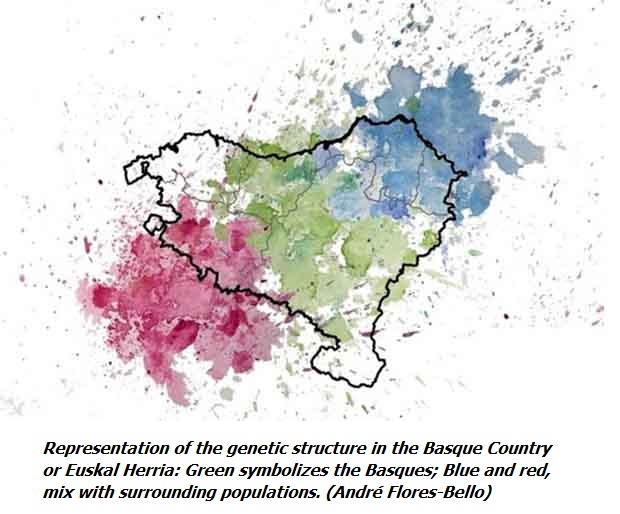The Basque genetic uniqueness may be due to the "linguistic barrier" since the Iron Age

An internal population is the result of its genetic continuity since the Iron Age, characterized by isolation and low mix. The main factor: "The language barrier".
A new work by Universitat Pompeu Fabra shows that the genetic uniqueness of the Basque population is not due to its external origin with respect to other populations of the Iberian Peninsula, but to the reduction of contacts with other groups since the Iron Age, a period that in Western Europe corresponds between centuries VIII and I before Christ.
The genomic analysis performed by a team led by the main researcher at the UPF David Comas points to the language barrier as a possible bulwark that prompted the isolation of the population that now we know as the Basque Country (Euskal Herria, in Basque).
Current and ancient DNA samples
The study has been carried out with DNA samples of 1,970 current and ancient individuals, "the most exhaustive geographical sampling of the Basque population, with more than 600,000 genetic markers throughout the genome for each individual."
In this way, the Basque uniqueness would be explained by its long "isolation periods" and its "lack of genetic flux", that is, the little mix with other populations.
The UPF team explains that its investigation indicates that "the cultural barrier of language could promote the isolation of the Basque population to subsequent population contacts, such as the influence of the Roman Empire or the Islamic occupation of the Peninsula, and even acted as an internal barrier in some cases due to the use of dialects ».
Thus, the "differentiated characteristics" at the genetic level would not be a result of an external origin with respect to other Iberian populations ".
Comparison with other European populations
Research has compared the population of Euskal Herria with other current European populations and concludes that "Basques have a genetic composition similar to the rest of Western European populations, but they have slight differences."
Professors David Comas and Jaume Bertran-Petit have been studying these issues from at least 2008, when a study of the UPF already warned these genetic differences with respect to the whole of Europe's population, a continent that, genetically speaking, is "very homogeneous".
This study, in which linguists and geneticists have participated, has been published in the magazine 'Current Biology'.
Relationship with the dialects of the Euskera or Basque language
The first author of the article, André Flores-Bello, has explained that "sampling included micro-regions within the Basque Country and also from the surrounding areas."
"Thus, we obtained samples from a geographical region where Euskera has always been spoken, others where historically has been spoken but has been lost, and regions where Euskera has never been spoken."
Comas, in turn, has noted that it has not been found "influence from northern Africa that is seen in most populations of the Iberian Peninsula, nor is the footprint of other migrations such as the romanization".
This study also allows researchers to suggest that the dialects of the Euskera "may have existed long before the iron age, and therefore they are related to the genetic structure."










